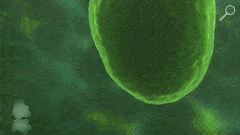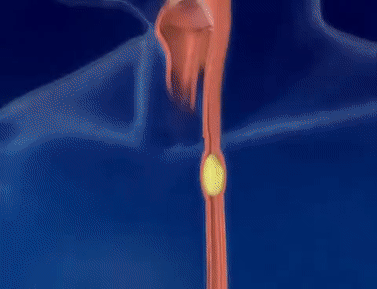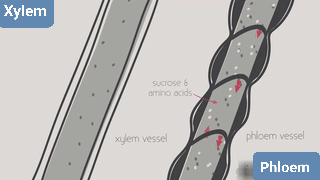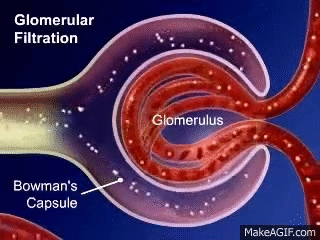Topics in the Chapter
• Introduction
• Modes of Nutrition
•Autotrophic Nutrition
→ Raw materials for photosynthesis
→ Site of Photosynthesis
→ Main Events of Photosynthesis
• Stomata
→ Functions of stomata
• Heterotrophic Nutrition
→ How organisms obtain their food
• Nutrition
• Nutrition in Human Beings
→ Human Digestive System
• Respiration in Human Beings
→ Breakdown of Glucose by Various Pathways
→ Types of Respiration
→ Human Respiratory System
→ Mechanism of Breathing
• Respiration in plants
• Transportation in Human Beings
→ Circulatory system in human beings
• Blood circulation in human body
→ Direction of blood flow through human heart
• Blood
→ Lymph
→ Types of Blood Vessels
→ Exchange of gases between alveoli, blood and tissues
• Transportation in Plants
→ Transpiration and its Functions
• Excretion System in Human Beings
→ Excretory wastes
→ Three steps of Urine formation
→ Formation of Urine in Human Beings
→ Functions of Nephron
→ Artificial Kidney
• Excretion in Plants
Introduction
→ All living things perform certain life processes like growth, excretion, respiration, circulation etc.
→ All the processes like respiration, digestion, which together keep the living organisms live and perform the job of body maintenance are called life processes.
Modes of Nutrition
• Nutrition in Plants
(i) Plants are autotrophs.
(ii) Make their own food.
• Nutrition in Animals
(i) Animals are heterotrophs.
(ii) Depends on plants or other
Autotrophic Nutrition
→ The mode of nutrition in which an organism prepares its own food is called autotrophic nutrition. Green plants and blue-green algae follow the autotrophic mode of nutrition.
→ The organisms which carry out autotrophic nutrition are called autotrophs (green plants)
→ Autotrophic nutrition is fulfilled by the process by which autotrophs take in CO2 and H2O and convert these into carbohydrates in the presence of chlorophyll, sunlight is called Photosynthesis.
• Equation for Photosynthesis:
Raw materials for photosynthesis
→ Sunlight: It is inorganic material.
→ Chlorophyll: Sunlight absorbed by chlorophyll.
→ CO2: Enters through stomata and oxygen (O2) is released as by-product through stomata on leaf.
→ Water: Water + dissolved minerals like nitrogen, phosphorus etc. are taken up by the roots of the soil.
• Site of Photosynthesis
Some cells contain green pigments which are called chloroplasts which contain chlorophyll.
Main Events of Photosynthesis
→ Absorption of light energy by chlorophyll.
→ Conversion of light energy into chemical energy + splitting (breaking) of water into hydrogen and oxygen.
→ Reduction of CO2 to carbohydrates.
Stomata
Stomata are the tiny pores present on the surface of the leaves.
Functions of stomata
→ Exchange of gases O2/CO2.
→ Loses large amount of water (water vapour) during transpiration.
Heterotrophic Nutrition
→ Kind of nutrition in which organisms do not possess the ability to synthesize their own food. They depend on autotrophs for their food supply directly or indirectly.Example: Animals, fungi.
→ Holozoic Nutrition: Animals take in solid food and breakdown inside the body.
Example: Amoeba, animals.
→ Saprophytic Nutrition: Organisms feed on dead, decaying matter.
Example: Fungi.
→ Parasitic Nutrition: Parasites live inside or outside other organism (host) and derive nutrition from it.
Example: Cuscuta (plant parasites), Ticks etc.
How organisms obtain their food
→ Unicellular/Single celled organisms: Food is taken up through entire surface.
Example: Amoeba, Paramecium
Process of intake of food by Amoeba
→ Paramaecium: Cilia (Present all over the body) → Take in food → At a specific spot
Nutrition
Different organisms utilize different nutritional processes as it depends upon the source of carbon from where the food is taken.
Nutrition in Human Beings
→ The alimentary canal is basically a long tube extending from the mouth to the anus. Various regions are specialised to perform different functions.
• Human Digestive System
(i) Mouth: Intake of whole food.
(ii) Teeth: Chewing/grinding of food.
(iii) Tongue: Rolling of food + Tasting of food + Swallowing/Pushing down of the food.
(iv) Salivary Glands: Secrete saliva and Mucus (It is a sticky, gelatinous material that lines your lungs, throat, mouth, nose, and sinuses.). Starch is converted into glucose by saliva (Salivary amylase)
v) Oesophagus: Taking food from mouth to stomach by Peristaltic movements (Contraction and expansion of muscles of the oesophagus).
(vi) Stomach: Gastric glands present in stomach secrete gastric juice.
(vii) Small Intestine: The small intestine is the site of the complete digestion of carbohydrates, proteins and fats. (a) Walls of small intestine secrete intestinal enzyme which convert Carbohydrates into glucose, fats in fatty acid + glycerol and Proteins into amino acids.
b) It has Villi (finger like projection) which help in the absorption of food into blood.
c) It receives the secretions of the liver and pancreas.
→ The food is acidic which is made alkaline for the pancreatic enzymes to act. The pancreas secretes pancreatic juice which contains enzymes like trypsin for digesting proteins and lipase for breaking down emulsified fats.
→ Fats are present in the intestine in the form of large globules which makes it difficult for enzymes to act on them. Bile salts break them down into smaller globules which increases the efficiency of enzyme action.
(viii) Large Intestine:
(a) Absorb excess of water.
(b) The rest of the material is removed from the body via theBeings
Respiration in Human Beings
→ Respiration involves:
(i) Gaseous exchange (Breathing) : Intake of oxygen from the atmosphere and release of CO2.
(ii) Cellular respiration: Breakdown of simple food in order to release energy inside the cell.
Breakdown of Glucose by Various Pathways
→ The first step is the break-down of glucose (a six-carbon molecule) into a three-carbon molecule called pyruvate which takes place in the cytoplasm.
→ The pyruvate may be converted into ethanol and carbon dioxide which takes place in yeast during fermentation. Since this process takes place in the absence of air (oxygen), it is called anaerobic respiration.
→ The pyruvate is broken down into three-carbon pyruvate molecule in the presence of oxygen to give three molecules of carbon dioxide and water. This process takes place in mitochondria. Since this process takes place in the presence of air (oxygen), it is called aerobic respiration.
→ The pyruvate is converted into lactic acid when there is a lack of oxygen in our muscle cells, which is also a three-carbon molecule. This build-up of lactic acid in our muscles during sudden activity causes cramps.
The whole process of break down of glucose is shown below:
→ The energy released during cellular respiration is immediately used to synthesise a molecule called ATP which is used to fuel all other activities in the cell. In these processes, ATP is broken down giving rise to a fixed amount of energy which can drive the endothermic reactions taking place in the cell.
→ The rate of breathing in aquatic organisms is much faster than that seen in terrestrial organisms because the amount of dissolved oxygen is fairly low compared to the amount of oxygen in the air.
Types of Respiration
•
Human Respiratory System
Passage of air through the respiratory system:
→ Nostril: Air is taken into the body.
→ Nasal Passage: It is a channel for air flow through the nose.
→ Nasal Cavity: It is lined with hairs and mucus membrane. It warms, moisturize, and filter air before it reaches the lungs.
→ Pharynx: It is a tube-like structure which continues after the nasal passage.
→ Larynx: This part comes after the pharynx. This is also called voice box.
→Trachea:This is composed of rings of cartilage. Cartilaginous rings prevent the collapse of trachea in the absence of air.
→Bronchi: A pair of bronchi comes out from the trachea, with one bronchus going to each lung.
Bronchioles: A bronchus divides into branches and sub-branches inside the lung.
Alveoli: These are air sacs at the end of bronchioles. The alveolus is composed of a very thin membrane and is the place where blood capillaries open. This is alveolus, where the oxygen mixes with the blood and carbon dioxide exits from the blood. The exchange of gases, in alveoli, takes place due to the pressure differential.
Breathing Mechanism
Transportation in Human Beings
Human beings like other multicellular organism need regular supply of food, oxygen etc. This function is performed by circulatory system.
→ The circulatory system in human beings consists of:
(i) Heart (pumping organ)
(ii) Arteries and Veins (Blood vessels)
(iii)Blood and lymph (Circulatory medium)
Circulatory system in human beings
→ The lungs supply oxygen-rich blood to the the left atrium of the heart.
→ The left atrium relaxes when it is collecting the blood and contracts when blood is transferred to the left ventricle. The left ventricle expands when it receives blood.
→ The blood is pumped out of the body when the muscles of left ventricle contracts.
→ De-oxygenated blood comes from the body to the upper chamber on the right i.e. the right atrium when it expands.
→ The corresponding lower chamber i.e. the right ventricle expands when right atrium contracts. It transfers the blood to the right ventricle which in turn pumps it to the lungs for oxygenation.
→ Right ventricles have thicker muscular walls so that they pump blood into various organs.
→ Valves ensure that blood does not flow backwards when the atria or ventricles contract.
Blood circulation in human body
→ Double circulation: Blood travels twice through the heart in one complete cycle of the body.Direction of blood flow through human heart
→ Pulmonary Circulation: Blood moves from the heart to the lungs and back to the heart.
→ Systemic Circulation: Blood moves from the heart to rest of the body and back to the heart.
Blood
Blood is connective tissue which is fluid in nature.
→ Solid components of blood (Blood corpuscles):
(i) RBC (Red blood cells): It carries O2 and CO2 and also contain Haemoglobin which impart red colour to the blood.
(ii) WBC (White blood cells): It provides body defence by engulfing the germs and produces antibodies.
(iii) Blood Platelets: It helps in blood clotting during injury.
→ Liquid components (Plasma): It is a yellow colour fluid which contain 90% water & 10% organicsubstances.
• Lymph
→ It is a yellowish fluid which escapes from the blood capillaries into the intercellular spaces.
→ It contains less proteins than blood.
→ It flows from the tissues to the heart which helps in transportation and destroying germs.
→ It carries digested and absorbed fat from intestine and drains excess fluid from extra cellular space back into the blood.
• Types of Blood Vessels
There are three types of blood vessels
(i) Arteries
(ii) Veins
(iii) capillaries
Arteries:
- These are thick-walled blood vessels
- It carry oxygenated blood from the heart to different organs.
- Pulmonary arteries are exceptions because they carry deoxygenated blood from the heart to lungs.
- Arterial have no valve
- Blood flow under high pressure
Veins:
- These are thin-walled blood vessels
- which carry deoxygenated blood from different organs to the heart,
- pulmonary veins are exceptions because they carry oxygenated blood from lungs to the heart.
- Valves are present in veins to prevent back flow of blood.
- Blood flow under low pressure
- These are the blood vessels which have single-celled walls.
- Gaseous exchange takes place between blood and cells at capillaries.
Transportation in Plants
There are two main conducting pathways in a plant.
(i) Xylem
(ii) Phloem
Transpiration and its Functions
It is the process of loss of water as vapour from aerial parts of the plant.
(a) Absorption and upward movement of water and minerals by creating transpiration pull. The transpiration pull sucks the water column from the xylem tubes and thus, water is able to rise to great heights in even the tallest plants.
(b) Helps in temperature regulation in plant.
Translocation: Transport of food from leaves (food factory) to different part of the plant is called Translocation.
Excretion System in Human Beings
Excretory/urinary system consists of :
(1) The kidneys : The excretory organ
(2) The ureters : The ducts which drain out urine from the kidneys
(3) The urinary bladder : The urinary reservoir
(4) The urethra : The channel to the exterior
Excretion
(i) The metabolic activities in the body generates many kinds of wastes including nitrogenous wastes which are harmful for the body and hence needed to be removed. Excretion is a process by which these wastes are removed from our body.
(ii) Unicellular organisms remove these wastes by simple diffusion.Excretory wastes
Functions of Organs involved in Excretory System Each kidney contains many filtration units called as nephrons.
→ Nephrons are made up of a cluster of thin walled capillaries called glomerulus which is associated with a cup like structure called as Bowman’s capsule and the long tube which terminates through thiscapsule.
→ The renal artery brings oxygenated blood to the kidneys along with the nitrogenous wastes like urea and uric acid and many other substances.
→ The blood gets filtered through the glomerulus and this filtrate enters the tubular part of nephron.
→ As this filtrate moves down the tubular part, glucose, amino acids, salts and excess of water gets selectively reabsorbed by the blood vessels surrounding these tubules.
→ The amount of water reabsorbed depends upon :
(i) How much excess of water is there in the body and,
(ii) How much nitrogenous wastes need to be excreted out.
→ So the fluid now flowing in the tubular part is urine which gets collected in collecting ducts of nephrons.
→ These collecting ducts together leave the kidney at a common point by forming the ureter.
→ Each ureter drains the urine in the urinary bladder where it is stored until the pressure of expanded bladder leads to an urge to pass it out through urethra.
→ This bladder is a muscular structure which is under nervous control.
→ 180 litres of filtrate is formed daily but only 2 litres is excreted out as urine so the rest is reabsorbed in the body.
Structure of Nephron
Formation of urine in Humans The urine formation involves three steps :
(i) Glomerular filtration: Nitrogenous wastes, glucose water, amino acid filter from the blood into Bowman Capsule of the nephron.
(ii) Tubular reabsorption: Now, useful substances from the filtrate are reabsorbed back by capillaries surrounding the nephron.
(iii) Secretion: Urea, extra water and salts are secreted into the tubule which open up into the collecting duct & then into the ureter.
Functions of Nephron
→ Excretion of nitrogenous wastes.
→ To maintain the water and ionic balance (osmic regulation).Artificial Kidney
Haemodialysis: The process of purifying blood by an artificial kidney. It is meant for kidney failure patients.
Excretion in Plants
Plants use different strategies for excretion of different products :
→ Oxygen and carbon dioxide is diffused through stomata.
→ Excess water is removed by transpiration.
→ Plants can even loose some of their old parts like old leaves and bark of tree.
→ Other waste products like raisins and gums especially in old xylem cells which can also be lost by plants.
→ Plants also secrete some waste substances into the soil around them.
.jpeg)
.gif)
.png)






.jpeg)

.jpeg)

.jpeg)




.jpeg)
.jpeg)
.jpeg)

.png)






.png)

.jpeg)

.jpeg)













.jpeg)



.jpeg)



.jpeg)

.jpeg)
.jpeg)
.jpeg)
.jpeg)
No comments:
Post a Comment